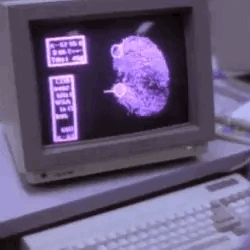#Vehicle Computer
Explore tagged Tumblr posts
Text
I noticed that a lesser known part of the objectum/posic community is the Instagram Transport community. So I’m shedding light here:


THIS GOES ON FOREVER.
#objectum#objectum sexuality#objectum win#objectophilia#posic community#posic#transportation#instagram bus community#robotfucker#robot fucker#robot lover#the eroticism of the machine#machine fucker#machinery#machine lover#computer love#computer fucker#computer#bus#bus objectum#vehicle objectum#object sexuality#perception of object sentience
81 notes
·
View notes
Text









a stimboard for every stardew valley marriage candidate!
11/12 - sebastian!
x x x / x x x / x x x
#stimboard#stim#gifs#hands#tech#computers#neon#eyestrain#dice#muisc#vehicles#purple#black#white#sdv#stardew valley#sdv sebastian#non request#strawberry’s series
290 notes
·
View notes
Text
In the content you have come to expect from this blog, I wish to talk about the hamburger in the Royal Realm. I will not beat around the bush. Here it is:

I spend a lot of time agonizing about whether or not they have various foods in Soul Society, usually based on age of introduction to Japan, and my own feeble attempts extrapolate which cultural forces do or do not exist, but this one feels very straightforward: there is no way they have hamburgers in Soul Society.
Wait, no, I am going to roll that back slightly, because I think it is the nature of Joe Shinigami to smuggle any kind of anything small enough to be stuffed into a shihakushou back through a senkaimon, so it's not like there has never been a hamburger in Soul Society. Kensei looks very much like a burg man, and he's probably published instructions for how to make one in his cooking column, but I can't bring myself to believe they are more than a rare and very expensive novelty. Also, as is the way of Soul Society, no matter how carefully you source your ingredients which time-tested recipe you follow, it will come out subtly and indescribably wrong.
And yet! Kirio seems to have mastered the art! Or has she? As becomes evident in this subsequent shot, there is something deeply wrong with this burger: it appears to be roughly the same height as Rukia and probably twice the weight.

The Royal Guard is known for innovating, and I'm so interested in this-- is Kirio trying out new foods for their reishi-holding capacities? Did she make this for Ichigo in particular, because it would otherwise be rare for her to encounter someone who has actually eaten a burger before? (Presumably Renji, who knows everything about the World of the Living, might also have some feedback). Where did she find out about burgers? The Royal Realm is basically the Los Alamos of Soul Society. It's not unthinkable that they figured out how to get Food Network up there.
I am so mad that we didn't get to see the full footage of everyone's trip through every stage of the Royal Realm. Did Kirio make Byakuya the Giant Hamburger? You know that Byakuya doesn't approve of anything invented or introduced to Japan after the Tokugawa Shogunate, but I feel like he would have great respect for anything he encountered in the Royal Realm. What I am saying is that I think it would be great if post-TYBW Byakuya gets into hamburgers with the signature intensity with which he pursues all of his interests.
PS: For full disclosure, the giant burg is anime-only. Presumably it got the Kubo seal of approval. But guess what he drew originally! (answer below the cut)

#soul society food culture#royal realm#bleach tybw#byakuya and rukia showing up at ichigo's door one day wearing matching guy fieri flame print bowling shirts#'kurosaki ichigo. we wish to go to flavortown'#i didn't want to get off-topic but those wonderbread-ass club sandwiches are surely not soul society standard either#i cannot believe those are an effective vehicle for spiritual power fortification#god i would love to read kirio's 17-volume art of computer programming style dissertation on storing fighting power in foodstuffs
35 notes
·
View notes
Text









Stimboard prompt: Send me a character from our whitelist and I'll make a stimboard based off what I believe their queer identity is (and/or their canonical identity) Character: Danny Fenton / Danny Phantom (Danny Phantom) Answer: Bisexual Transgender Boy (pronouns are he/him) ☽ - ✰ - ☾ ☽ - ✰ - ☾ ☽ - ✰ - ☾
ଘ(੭*ˊᵕˋ)੭* ੈ♡‧₊˚ Question by anon!
#💙 sugar life posting 🌙#stimboards#stimboard#stimboard request game#stimboard game#request game#slime#poking#vehicles#cars#beds#bedrooms#computers#tech#technology#instruments#music#drums#drum set#stickers#paint#planchette#planchettes#ouija#ouija planchette#keyboards#typing#blue#pink#white
11 notes
·
View notes
Text
Let's go, Voltron Force!!!!!!
#lets go voltron force#voltron#vehicle voltron#voltron vehicle force#Voltron of the Near Universe#voltron I#Armored Fleet DaiRugger XV#computer animation#80s nostalgia#nostalgia
9 notes
·
View notes
Text

Top 47K - Wanted: Dead (and Pursuit Force!)
Join the HG101 gang as they discuss and rank one of those games that’s supposedly so bad it’s good. But is it? Listen and find out! Then, remember PURSUIT FORCE? We do!
#wanted dead#soliel#110 industries#action games#pursuit force#bigbig studios#sony computer entertainment#psp#vehicle combat#third person shooter#hardcore gaming 101#podcast#top 47858 games of all time#video games#retro games
5 notes
·
View notes
Photo

#car#coffee#building#human#computer#laptop#face#baby#vehicle#drink#coffee cup#electronics#machine#car wash#computer keyboard#screen#automobile#monitor#hardware#wheel
5 notes
·
View notes
Text
everyone in my waking life including people I have just recently become friends with are beginning to understand Just How Weird I am about 2001 a space odyssey but every time it comes up I fail to properly convey what that actually means 2 me with my human language skills
#like YES it's about the contrast of humanity in the inhuman. and about connection across spacetime. and the nature of evolution#and YES it is about experiencing cosmic ego death and having a second chance romance with your spaceship computer#and also YES the deeply sterile atmosphere of the film and somewhat clinical way the books treat interpersonal relations#serve as a contradictorily perfect vehicle for exploring the untouched upon romantic/sexual (homosexual) element of the text#it just makes sense.#and trust me that's not the only thing I need to say but it's not even coherent as it stands. so
3 notes
·
View notes
Text
IM GOING TO HAVE A CAR SOON
#thank fuck#it’s been like 5 years since i’ve had my own vehicle#there is an overlook of the mountains nearby I’ve been wanting to go draw at for MONTHS#now that I have a tablet that isn’t dependent on a computer + a car (soon) I can make my dreams a reality….#I’ve just gotta get clip studio set up on the tablet#wish babbles
2 notes
·
View notes
Text
#1. Global Politics#“2024 US Election”#“Russia Ukraine conflict”#“China Taiwan tensions”#“Israel Palestine ceasefire”#“NATO expansion”#2. Technology & Innovation#“AI advancements”#“Quantum computing breakthroughs”#“ChatGPT updates”#“5G technology”#“Electric vehicles news”#3. Climate & Environment#“Climate change summit”#“Carbon capture technology”#“Wildfires 2024”#“Renewable energy news”#“Green energy investments”#4. Business & Economy#“Stock market news”#“Global inflation rates”#“Cryptocurrency market trends”#“Tech IPOs 2024”#“Supply chain disruptions”#5. Health & Wellness#“COVID-19 variants”#“Mental health awareness”#“Vaccine development”#“Obesity treatment breakthroughs”#“Telemedicine growth”
3 notes
·
View notes
Text
Why Quantum Computing Will Change the Tech Landscape
The technology industry has seen significant advancements over the past few decades, but nothing quite as transformative as quantum computing promises to be. Why Quantum Computing Will Change the Tech Landscape is not just a matter of speculation; it’s grounded in the science of how we compute and the immense potential of quantum mechanics to revolutionise various sectors. As traditional…
#AI#AI acceleration#AI development#autonomous vehicles#big data#classical computing#climate modelling#complex systems#computational power#computing power#cryptography#cybersecurity#data processing#data simulation#drug discovery#economic impact#emerging tech#energy efficiency#exponential computing#exponential growth#fast problem solving#financial services#Future Technology#government funding#hardware#Healthcare#industry applications#industry transformation#innovation#machine learning
3 notes
·
View notes
Text
My mother confuses the fuck out of me
#i guess she's getting severance checks from her old job?#i mean fuck that's the least they could do after she worked there for 40 years#she only gets 900 a month from my dad's SSI survivor benefits#she went from saying we're struggling financially to suddenly offering to pay for shit i need#that kinda scares me because i think that means she's impulsively spending her savings. which could mean she thinks she's gonna die soon#she's 64 and my dad died at almost 63#like she helped my sister buy my niece a car. it's a 24 year old vehicle and only costed 4k and she paid 2k but 2k is a LOT to us#she said she's been saving my rent money to fix my car for the past couple of months on top of me saving for it#which means we definitely have the money to fix everything by now#but that's not happening all my tires still need to be replaced my ac doesn't work it's making clinking sounds#it stalled while i was driving the other day but turning it off and restarting it fixes it#anyway. the thing is I'm always sus about my mom offering shit.#she likes to hold shit over your head.#I'm very worried that she's gonna fix my car and then use that to control me in some way. because that's how it is every time.#but like.....it's better than not having the help. fuck.#i feel so privileged despite how broke and disabled i am. bc most disabled people dont have this to fall back on#the craziest thing is that the only reason we have this house is bc of my grandparents' inheritance#and neither of them went to college my grandpa was in the army#and my grandma only temporarily worked for jc penney as a bookkeeper#side note my 80 year old grandma was better with computers than most elderly people are today#just from that job? from what i know#when she died my family sold the family house and that's how we put the down payment on this house#which btw only costed 64k in 2012 apparently it's worth 175k now according to zillow#but like. how. i feel like my family being white and christian is the only reason we have all this privilege#i have a headache bye#.bdo
2 notes
·
View notes
Text
Elaine Liu: Charging ahead
New Post has been published on https://thedigitalinsider.com/elaine-liu-charging-ahead/
Elaine Liu: Charging ahead


MIT senior Elaine Siyu Liu doesn’t own an electric car, or any car. But she sees the impact of electric vehicles (EVs) and renewables on the grid as two pieces of an energy puzzle she wants to solve.
The U.S. Department of Energy reports that the number of public and private EV charging ports nearly doubled in the past three years, and many more are in the works. Users expect to plug in at their convenience, charge up, and drive away. But what if the grid can’t handle it?
Electricity demand, long stagnant in the United States, has spiked due to EVs, data centers that drive artificial intelligence, and industry. Grid planners forecast an increase of 2.6 percent to 4.7 percent in electricity demand over the next five years, according to data reported to federal regulators. Everyone from EV charging-station operators to utility-system operators needs help navigating a system in flux.
That’s where Liu’s work comes in.
Liu, who is studying mathematics and electrical engineering and computer science (EECS), is interested in distribution — how to get electricity from a centralized location to consumers. “I see power systems as a good venue for theoretical research as an application tool,” she says. “I’m interested in it because I’m familiar with the optimization and probability techniques used to map this level of problem.”
Liu grew up in Beijing, then after middle school moved with her parents to Canada and enrolled in a prep school in Oakville, Ontario, 30 miles outside Toronto.
Liu stumbled upon an opportunity to take part in a regional math competition and eventually started a math club, but at the time, the school’s culture surrounding math surprised her. Being exposed to what seemed to be some students’ aversion to math, she says, “I don’t think my feelings about math changed. I think my feelings about how people feel about math changed.”
Liu brought her passion for math to MIT. The summer after her sophomore year, she took on the first of the two Undergraduate Research Opportunity Program projects she completed with electric power system expert Marija Ilić, a joint adjunct professor in EECS and a senior research scientist at the MIT Laboratory for Information and Decision Systems.
Predicting the grid
Since 2022, with the help of funding from the MIT Energy Initiative (MITEI), Liu has been working with Ilić on identifying ways in which the grid is challenged.
One factor is the addition of renewables to the energy pipeline. A gap in wind or sun might cause a lag in power generation. If this lag occurs during peak demand, it could mean trouble for a grid already taxed by extreme weather and other unforeseen events.
If you think of the grid as a network of dozens of interconnected parts, once an element in the network fails — say, a tree downs a transmission line — the electricity that used to go through that line needs to be rerouted. This may overload other lines, creating what’s known as a cascade failure.
“This all happens really quickly and has very large downstream effects,” Liu says. “Millions of people will have instant blackouts.”
Even if the system can handle a single downed line, Liu notes that “the nuance is that there are now a lot of renewables, and renewables are less predictable. You can’t predict a gap in wind or sun. When such things happen, there’s suddenly not enough generation and too much demand. So the same kind of failure would happen, but on a larger and more uncontrollable scale.”
Renewables’ varying output has the added complication of causing voltage fluctuations. “We plug in our devices expecting a voltage of 110, but because of oscillations, you will never get exactly 110,” Liu says. “So even when you can deliver enough electricity, if you can’t deliver it at the specific voltage level that is required, that’s a problem.”
Liu and Ilić are building a model to predict how and when the grid might fail. Lacking access to privatized data, Liu runs her models with European industry data and test cases made available to universities. “I have a fake power grid that I run my experiments on,” she says. “You can take the same tool and run it on the real power grid.”
Liu’s model predicts cascade failures as they evolve. Supply from a wind generator, for example, might drop precipitously over the course of an hour. The model analyzes which substations and which households will be affected. “After we know we need to do something, this prediction tool can enable system operators to strategically intervene ahead of time,” Liu says.
Dictating price and power
Last year, Liu turned her attention to EVs, which provide a different kind of challenge than renewables.
In 2022, S&P Global reported that lawmakers argued that the U.S. Federal Energy Regulatory Commission’s (FERC) wholesale power rate structure was unfair for EV charging station operators.
In addition to operators paying by the kilowatt-hour, some also pay more for electricity during peak demand hours. Only a few EVs charging up during those hours could result in higher costs for the operator even if their overall energy use is low.
Anticipating how much power EVs will need is more complex than predicting energy needed for, say, heating and cooling. Unlike buildings, EVs move around, making it difficult to predict energy consumption at any given time. “If users don’t like the price at one charging station or how long the line is, they’ll go somewhere else,” Liu says. “Where to allocate EV chargers is a problem that a lot of people are dealing with right now.”
One approach would be for FERC to dictate to EV users when and where to charge and what price they’ll pay. To Liu, this isn’t an attractive option. “No one likes to be told what to do,” she says.
Liu is looking at optimizing a market-based solution that would be acceptable to top-level energy producers — wind and solar farms and nuclear plants — all the way down to the municipal aggregators that secure electricity at competitive rates and oversee distribution to the consumer.
Analyzing the location, movement, and behavior patterns of all the EVs driven daily in Boston and other major energy hubs, she notes, could help demand aggregators determine where to place EV chargers and how much to charge consumers, akin to Walmart deciding how much to mark up wholesale eggs in different markets.
Last year, Liu presented the work at MITEI’s annual research conference. This spring, Liu and Ilić are submitting a paper on the market optimization analysis to a journal of the Institute of Electrical and Electronics Engineers.
Liu has come to terms with her early introduction to attitudes toward STEM that struck her as markedly different from those in China. She says, “I think the (prep) school had a very strong ‘math is for nerds’ vibe, especially for girls. There was a ‘why are you giving yourself more work?’ kind of mentality. But over time, I just learned to disregard that.”
After graduation, Liu, the only undergraduate researcher in Ilić’s MIT Electric Energy Systems Group, plans to apply to fellowships and graduate programs in EECS, applied math, and operations research.
Based on her analysis, Liu says that the market could effectively determine the price and availability of charging stations. Offering incentives for EV owners to charge during the day instead of at night when demand is high could help avoid grid overload and prevent extra costs to operators. “People would still retain the ability to go to a different charging station if they chose to,” she says. “I’m arguing that this works.”
#2022#amp#Analysis#approach#artificial#Artificial Intelligence#attention#Behavior#Building#buildings#Canada#cascade#challenge#China#competition#computer#Computer Science#conference#consumers#cooling#course#data#Data Centers#devices#effects#electric power#electric vehicles#Electrical engineering and computer science (EECS)#electricity#Electronics
2 notes
·
View notes
Text
i am very passionate about people driving normal sized trucks that dont have 20million flashing lights in the dashboard and dont require you to fix an entire computer when theres something wrong with it
#txt#thats another thing when my dad had his transmission fuck itself it wasnt just a simple fix the mechanical parts#he had to pay out the ass to get the computer shit fixed too. like. whys your fucking vehicle got a puter in it
5 notes
·
View notes
Text
lmfao someone who commissioned AI generated images from Bing and tagged them as “fanart” tried to follow me, an actual digital artist. Blocked.
#Newsflash: pressing buttons on Bing to make it chop up and mash together images from the internet does not make you an artist#I wouldn’t have a problem with it if the process were ethical#and it picked from a specific database of work the artists consented to be uploaded to the mainframe#That would be fine; I’d participate in that and give it art to see what it cranks out#But I still wouldn’t call the end result art#I’d call it… computer fever dream#Only after AI gains sentience can you call its work art#AI right now is awful#same with filters and all convenience-centric low-effort means of so-called “creation”#It’s just a vehicle to let lazy anti-intellectuals with egos too large for their skill sets boast about how creative they are#at the expense of the people who actually put in the blood sweat and tears to create things#It reminds me of those kids in school who called themselves nerds when they weren’t interested in learning at all#and actively picked on the real nerds with unconventional interests#Sorry but no. You’re not smarter than everyone else and you’re not fooling anyone; if you want skills you have to work for it#Don’t say you’re skilled when you’re not even trying to be; it’s genuinely offensive to those who do try at any skill level#Full offense#I don’t have a problem with people who use certain types of AI for humor or describing what something they saw looks like#but I do have a problem with people taking credit they don’t deserve#No you’re not an artist if you only use AI#pick up a pencil and put it to paper
3 notes
·
View notes
Text
AI model speeds up high-resolution computer vision
The system could improve image quality in video streaming or help autonomous vehicles identify road hazards in real-time.
Adam Zewe | MIT News
Researchers from MIT, the MIT-IBM Watson AI Lab, and elsewhere have developed a more efficient computer vision model that vastly reduces the computational complexity of this task. Their model can perform semantic segmentation accurately in real-time on a device with limited hardware resources, such as the on-board computers that enable an autonomous vehicle to make split-second decisions.
youtube
Recent state-of-the-art semantic segmentation models directly learn the interaction between each pair of pixels in an image, so their calculations grow quadratically as image resolution increases. Because of this, while these models are accurate, they are too slow to process high-resolution images in real time on an edge device like a sensor or mobile phone.
The MIT researchers designed a new building block for semantic segmentation models that achieves the same abilities as these state-of-the-art models, but with only linear computational complexity and hardware-efficient operations.
The result is a new model series for high-resolution computer vision that performs up to nine times faster than prior models when deployed on a mobile device. Importantly, this new model series exhibited the same or better accuracy than these alternatives.
Not only could this technique be used to help autonomous vehicles make decisions in real-time, it could also improve the efficiency of other high-resolution computer vision tasks, such as medical image segmentation.
“While researchers have been using traditional vision transformers for quite a long time, and they give amazing results, we want people to also pay attention to the efficiency aspect of these models. Our work shows that it is possible to drastically reduce the computation so this real-time image segmentation can happen locally on a device,” says Song Han, an associate professor in the Department of Electrical Engineering and Computer Science (EECS), a member of the MIT-IBM Watson AI Lab, and senior author of the paper describing the new model.
He is joined on the paper by lead author Han Cai, an EECS graduate student; Junyan Li, an undergraduate at Zhejiang University; Muyan Hu, an undergraduate student at Tsinghua University; and Chuang Gan, a principal research staff member at the MIT-IBM Watson AI Lab. The research will be presented at the International Conference on Computer Vision.
A simplified solution
Categorizing every pixel in a high-resolution image that may have millions of pixels is a difficult task for a machine-learning model. A powerful new type of model, known as a vision transformer, has recently been used effectively.
Transformers were originally developed for natural language processing. In that context, they encode each word in a sentence as a token and then generate an attention map, which captures each token’s relationships with all other tokens. This attention map helps the model understand context when it makes predictions.
Using the same concept, a vision transformer chops an image into patches of pixels and encodes each small patch into a token before generating an attention map. In generating this attention map, the model uses a similarity function that directly learns the interaction between each pair of pixels. In this way, the model develops what is known as a global receptive field, which means it can access all the relevant parts of the image.
Since a high-resolution image may contain millions of pixels, chunked into thousands of patches, the attention map quickly becomes enormous. Because of this, the amount of computation grows quadratically as the resolution of the image increases.
In their new model series, called EfficientViT, the MIT researchers used a simpler mechanism to build the attention map — replacing the nonlinear similarity function with a linear similarity function. As such, they can rearrange the order of operations to reduce total calculations without changing functionality and losing the global receptive field. With their model, the amount of computation needed for a prediction grows linearly as the image resolution grows.
“But there is no free lunch. The linear attention only captures global context about the image, losing local information, which makes the accuracy worse,” Han says.
To compensate for that accuracy loss, the researchers included two extra components in their model, each of which adds only a small amount of computation.
One of those elements helps the model capture local feature interactions, mitigating the linear function’s weakness in local information extraction. The second, a module that enables multiscale learning, helps the model recognize both large and small objects.
“The most critical part here is that we need to carefully balance the performance and the efficiency,” Cai says.
They designed EfficientViT with a hardware-friendly architecture, so it could be easier to run on different types of devices, such as virtual reality headsets or the edge computers on autonomous vehicles. Their model could also be applied to other computer vision tasks, like image classification.
Keep reading.
Make sure to follow us on Tumblr!
#artificial intelligence#machine learning#computer vision#autonomous vehicles#internet of things#research#Youtube
3 notes
·
View notes